Buffalo TeraStation 5600 Bedienungsanleitung
Lies die bedienungsanleitung für Buffalo TeraStation 5600 (6 Seiten) kostenlos online; sie gehört zur Kategorie Server. Dieses Handbuch wurde von 31 Personen als hilfreich bewertet und erhielt im Schnitt 4.5 Sterne aus 16 Bewertungen. Hast du eine Frage zu Buffalo TeraStation 5600 oder möchtest du andere Nutzer dieses Produkts befragen? Stelle eine Frage
Seite 1/6

Video Surveillance Solution
Setup Guide

Introduction
Surveillance technology is no longer considered ‘new’
technology as videos have been recorded and stored for
reference, for many years. Looking back at the 1980’s,
systems would use the classic video recording technology
together with analogue cameras. Even today this analogue
technology is still widely in use.
However, in the past decade, we have seen dramatic
growth in the digital camera market; installing, recording and
configuration has been significantly simplified. With the ever
increasing need to improve quality of surveillance videos, the
reliability of CCTV footage to solve crime cases is now much
stronger. It is also necessary to have storage technology to
support the surveillance cameras - its crucial to be able to
locate and provide the footage efficiently.
This guide provides an outline of how to set up an efficient
system, using Buffalo’s Surveillance Video Manager.
What is the situation?
For many organisations it is mandatory to have a certain level
of security. For some companies it is vital to have an efficient
tool to fight crime. For example petrol stations are struggling
with increasing theft rates. In some cases you just need
observation to manage traffic, crowds in a stadium etc. We
could say the key tasks for such systems are:
Providing security
ensuring public safety
preventing theft
collecting evidence
managing crowds
protecting public and private property
recording critical events
Nowadays small and medium business are looking for
security enhancements like camera surveillance. The systems
are more affordable and the deployment has become less
complicated. But as a small, and possibly new business, who
can be certain at what rate your business will grow? It then
becomes difficult to predict what your requirement for data
storage will be in say, three to five years time. Therefore, in
terms of storage and surveillance it is most advisable look to
a highly scalable solution.
Many companies are still using analog technology. If you
are calculating the cost versus benefit of investing in a new
solution, and are using analogue technology, it would serve
as a more cost effective solution to look towards investing in
digital technology.
What is the solution?
Following the invention of the digital IP surveillance camera,
the natural progression was to record video streams,
therefore combining cameras with storage.
You could of course leave the job to the camera! Many
cameras can upload pictures or videos to an FTB or SMB
server, or even to http; this would mean all files are simply
stored. This can become very restrictive and a hindrance
when finding a specific record which is, if we remember back,
of the key requirements of a surveillance solution - providing
evidence. That said, if the requirements are not too high, this
basic set up could be sufficient.
Alternatively, you would look for a storage system combined
with a surveillance server - a more cost efficient, long-
term solution and possibly without discarding your former
IT investments. The storage would provide the hard disk
drive (HDD) space and help to manage the recorded video
content. Buffalo‘s basic solution includes powerful storage
and supports 1-10 cameras. But as you grow, your
surveillance storage can grow with you!
What use is a plethora of data with no tools to sort through
it? You would really be limited on how you could use it -
certainly not productively. Manufacturers, such as Buffalo,
have created a one-stop integrated solution that combines
storage, cameras, a surveillance server and software to
manage and use the data files.
Video Surveillance Solution

The solution from Buffalo Technology
Buffalo Technology has its own solution to meet the requirements of users in the
small and medium business and in the enterprise segment.
The solution includes:
NAS: TeraStation™ 5000 series
Powerful hardware
Easy to deploy
Populated with HDDs and preconfigured
Storage capacity per NAS device, from 2TB up to 32TB
With pre-installed video surveillance server to record RTSP streams
One free camera license
Flexible license model
Buy as you need
No subscriptions
Management software suite for PC and Mac
Manage cameras, storage connected to the network
Central management from one client
Search for videos across all storages
Video life cycle management
Export videos of interest
Camera live view
View network activity
Using the RTSP stream (Real Time Streaming Protocol) makes the solutions
compatible to standards. A wide range of cameras are natively supported.
Currently about 1200 camera models from various vendors. If a camera is not
natively supported but capable of RTSP it is possible to integrate the model by
customising the settings.
The flexible license model enables you to scale the solution according your
requirements. Because the costs are transparent, you don‘t need to buy
unnecessary volumes of storage or licences above the current requirement.
The Buffalo Solution comes with a powerful management suite. Rather than
connecting to one particular storage unit it manages everything from one central
point. Meaning that certain events take place across the network; configuring
cameras, storage policies such as duplicate, backup or purge; search for videos.
The advantage of this become widely apparent as your storage requirements and
set-up increases.
Video Surveillance Solution
Produktspezifikationen
| Marke: | Buffalo |
| Kategorie: | Server |
| Modell: | TeraStation 5600 |
| Display-Typ: | LCD |
| Prozessorhersteller: | Intel |
| Anzahl Prozessorkerne: | 2 |
| WLAN: | Nein |
| Mitgelieferte Kabel: | AC, LAN (RJ-45) |
| Produktfarbe: | Schwarz |
| AC Eingangsspannung: | 100-240 V |
| AC Eingangsfrequenz: | 50 - 60 Hz |
| Anzahl USB 2.0 Anschlüsse: | 2 |
| Betriebstemperatur: | 5 - 35 °C |
| Relative Luftfeuchtigkeit in Betrieb: | 20 - 80 % |
| Eingebauter Ethernet-Anschluss: | Ja |
| Stromverbrauch (Standardbetrieb): | 120 W |
| Anzahl Ethernet-LAN-Anschlüsse (RJ-45): | 2 |
| Ethernet LAN Datentransferraten: | 10,100,1000 Mbit/s |
| LED-Anzeigen: | Ja |
| Temperaturbereich bei Lagerung: | -20 - 60 °C |
| Ein-/Ausschalter: | Ja |
| Größe (Imperial): | 9.1 Zoll |
| Prozessor-Taktfrequenz: | 2.13 GHz |
| Prozessorfamilie: | Intel Atom® |
| Prozessor: | D2700 |
| Web-basiertes Management: | Ja |
| Management-Protokolle: | TCP/IP, UDP |
| Anzahl der installierten Speicherlaufwerke: | 6 |
| Gesamte installierte Speicherkapazität: | 18 TB |
| Anzahl der unterstützten Speicherlaufwerke: | 6 |
| Maximal unterstützte Speicherkapazität: | 18 TB |
| Speicherkapazität: | 3000 GB |
| RAID-Unterstützung: | Ja |
| RAID Level: | 0, 1,5, 6,10, 50, 51, JBOD |
| RAM-Speicher: | 2 GB |
| USB 3.2 Gen 1 (3.1 Gen 1) Anzahl der Anschlüsse vom Typ A: | 3 |
| Gehäusetyp: | Desktop |
| Externes Netzteil: | Nein |
| Prozessor-Cache: | 1 MB |
| Frontsidebus des Prozessors: | - MHz |
| Prozessor Cache Typ: | L2 |
| Prozessor-Code: | SR0D9 |
| Prozessor Codename: | Cedarview |
| Prozessor Lithografie: | 32 nm |
| Prozessorbetriebsmodi: | 64-Bit |
| Prozessor-Paketgröße: | 22 X 22 mm |
| Prozessor-Threads: | 4 |
| Stepping: | B2 |
| Systembus-Rate: | 2.5 GT/s |
| Thermal Design Power (TDP): | 10 W |
| Prozessorsockel: | BGA 559 |
| ARK Prozessorerkennung: | 59683 |
| Interner Speichertyp: | DDR3 |
| Intel® Turbo-Boost-Technologie: | Nein |
| Eingebettete Optionen verfügbar: | Nein |
| Intel® 64: | Ja |
| Intel® Virtualization Technologie (VT-X): | Nein |
| Mitgelieferte Software: | NovaBACKUP Business Essentials v14 |
| Unterstützte Protokolle: | CIFS/SMB, AFP, HTTP/HTTPS, FTP/SFTP/FTPS, NFS |
| Verkabelungstechnologie: | 10/100/1000Base-T(X) |
| DHCP-Client: | Ja |
| DHCP-Server: | Ja |
| Intel® Hyper-Threading-Technik (Intel® HT Technology): | Ja |
| Verbesserte Intel SpeedStep Technologie: | Nein |
| Anzahl installierter Prozessoren: | 1 |
| Tjunction: | 100 °C |
| Maximale Anzahl der PCI-Express-Lanes: | 4 |
| Maximaler interner Speicher, vom Prozessor unterstützt: | 4 GB |
| Speichertypen, vom Prozessor unterstützt: | DDR3-SDRAM |
| Durch den Prozessor (max) unterstützte Speicherbandbreite: | 6.4 GB/s |
| On-Board Grafikadapter Basisfrequenz: | 640 MHz |
| Anzahl an unterstützen Displays (On-Board-Grafik): | 2 |
| Execute Disable Bit: | Ja |
| Intel® Virtualisierungstechnik für direkte I/O (VT-d): | Nein |
| Bus Typ: | DMI |
| Speicherkanäle, vom Prozessor unterstützt: | Einzelbild |
| ECC vom Prozessor unterstützt: | Nein |
| Speicherlaufwerk Schnittstelle: | Serial ATA II, Serial ATA III |
| Intel® Demand Based Switching: | Nein |
| Intel® Dual Display Capable Technology: | Ja |
| Intel HD-Audio-Technik: | Ja |
| Bildertypenkarte: | <div><img src="https://ark.intel.com/inc/images/diagrams/diagram-1.gif" title="Block Diagram" /></div> |
| Anzahl Lüfter: | 2 Lüfter |
| eSATA: | Nein |
| FireWire 800: | Nein |
| Größe des Speicherlaufwerks: | 3.5 Zoll |
| Im laufenden Betrieb wechselbare Gehäuseschächte: | Ja |
| Physical Address Extension (PAE): | 36 Bit |
| Unterstützung für redundantes Netzteil: | Nein |
| Management-Plattform: | VMware |
| Pufferspeicher L2: | 1 MB |
| Laufwerk, Übertragungsrate: | 3 MB/s |
| Laufwerkseinschübe: | 6 |
| vorinstallierte Software: | Ja |
| Leistungsmanagementfunktionen - Beschreibung: | HTTP, HTTPS |
| Intel® ME Firmware-Version: | Nein |
Brauchst du Hilfe?
Wenn Sie Hilfe mit Buffalo TeraStation 5600 benötigen, stellen Sie unten eine Frage und andere Benutzer werden Ihnen antworten
Bedienungsanleitung Server Buffalo

17 September 2024

16 September 2024

19 August 2024

11 August 2024

3 August 2024

3 August 2024

1 August 2024

1 August 2024

1 August 2024
Bedienungsanleitung Server
- Extron
- GeoVision
- Moxa
- Lenovo
- LevelOne
- Abus
- LaCie
- Opengear
- Areca
- Allnet
- Revox
- Hanwha
- Raritan
- Siig
- Tripp Lite
Neueste Bedienungsanleitung für -Kategorien-
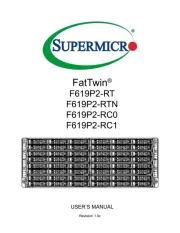
7 August 2025
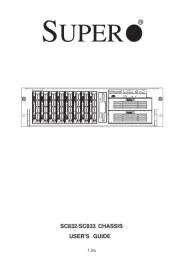
7 August 2025
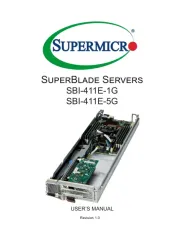
7 August 2025
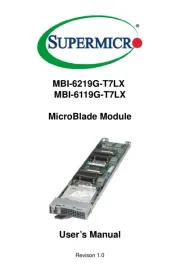
7 August 2025
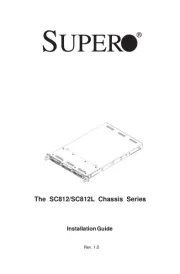
7 August 2025
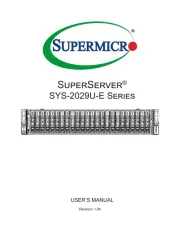
7 August 2025
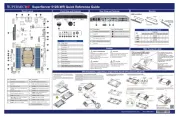
7 August 2025
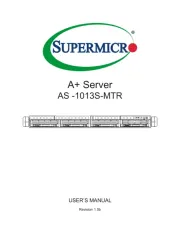
7 August 2025
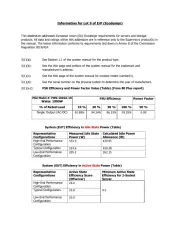
7 August 2025
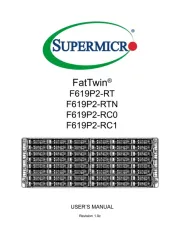
7 August 2025
